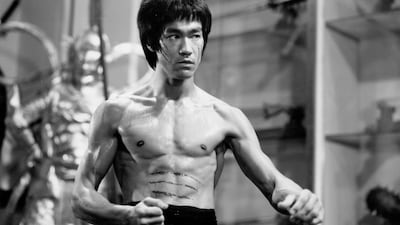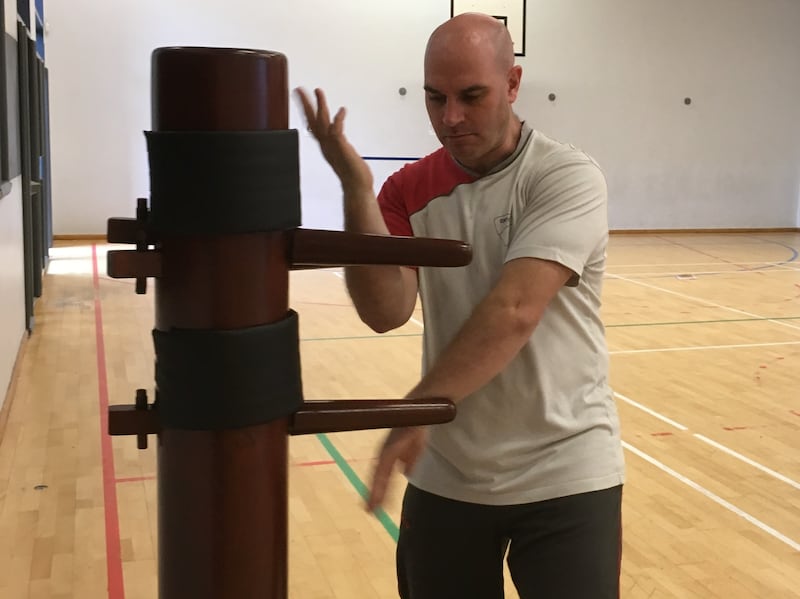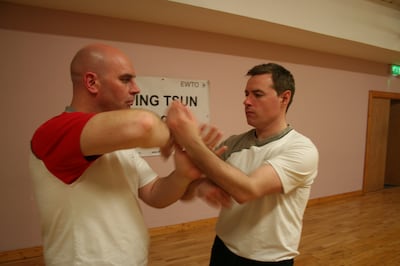Each week, we are looking at a specific martial art – where it comes from, what the focus is, benefits, dangers, and where in Ireland it is practice.
First on the list is Wing Tsun (Wing Chung), with Daragh Breathnach – who runs a school in Navan, Co Meath – answering our questions about the art Bruce Lee brought to the masses on the movie screen.

Where does Wing Tsun originate?
Wing Tsun (or Wing Chung) comes from southern China. Legend has it the art was invented a couple of hundred years ago by a Buddhist nun for a woman called Yin Wing Tsun. There was a local warlord or criminal who was trying to force her to marry him and she used the art to beat him up and fight him off. She later taught it to her husband and he named it after her.
In 1950, after the Chinese civil war, a guy called Yip Man fled from China to Hong Kong and brought the art with him. He started teaching it to try and make some money and that is pretty much where it spread from. One of his more famous students was Bruce Lee and he brought it to America and made it famous and that's where most people heard of it.
How popular is it?
In Ireland, the organisation I’m part of are celebrating their 20th anniversary this year. The popularity came from the whole Bruce Lee thing, everyone wanted to know what he was doing. And now in the last couple of years there has been a number of films made about Yip Man, so that’s given it a bit of a boost as well.
Robert Downey Jr is a big Wing Tsun guy and he used it as his fighting style when he was playing Sherlock Holmes and Iron Man. He had his instructor come to the set of Sherlock Holmes to choreograph fights.
In Germany, they have 10,000 clubs, so it's popular worldwide.

What is the main focus of the art?
The main focus is self-protection. It was basically designed to help a woman overcome a larger male attacker and it’s designed for smaller opponents to take on a larger person; it’s a close quarter system.
What would be the Trademark move?
Chi Sau. It works on the idea that tactile reactions are quicker than visual ones. What we look to do is make contact with someone else’s arms as soon as possible in an encounter. Though the Chi Sau training you can feel the moment before they finish it so, if you’ve got contact with their arm and they go to punch, you can feel that punch coming and you can move out of the way or redirect it.
Both of your arms are bent. You make contact at the wrist. One person will try to initiate a movement and the other one will feel the energy coming and will move around that and then try to find an opening to counter it. The first person will move around and counter it again. Its all about feeling the force coming towards you, moving around you, and passing it back to the other person.
How is it ranked? Do you compete?
We’ve got what you call student grades. You’ve got 12 student grades, each one would take about three months if you are training once or twice a week to pass. After the student grades we have higher grades and they are much more detailed and much more in-depth studies of the movement. There are five of those and when you have completed them you are then officially a Wing Tsun Master. There are five more grades after that to bring you to grand master.
In Ireland, we have one master (Sifu), a guy called Aidan Canavan who's based in Dublin. In Europe there are four. It takes a while to get there.
Because the focus is on self-protection we train to hit and run rather than to stick around and keep fighting so we don't really train in competitions based on the theory that the way you train is the way you fight. We don't want to be hitting someone and then standing to see can we hit them again. If we hit them and they are distracted, we are looking to get out of there. It is used in MMA – Tony Ferguson uses it in the octagon.
How do I find a club or organisation in Ireland?
There are clubs in Navan, Killarney, Sligo, Blanchardstown in Dublin, Dunboyne and Bangor. It is quite popular in Ireland.
We have a website (wingtsun.ie) for our organisation with contact details for instructors in various clubs and there is a contact form on the site. We are trying to promote the art as much as possible across the board, and we'll happily pass you on to other clubs and organisations that might be nearer you.
Who can benefit from the art and how?
It really can benefit anyone and everyone. On the surface, it’s a highly effective and practical self-defence system that will work for people of any size, but if you scratch beneath that surface you are practicing meditation and mindfulness. The whole idea is you are focusing on the moment, focusing on the movement to the exclusion of everything else. It will strengthen your legs and improve your posture and engage your core, its also a great stress reliever.

Generally, it’s not fast paced enough for kids, they usually start from late teens up.
How safe is it?
It’s incredibly safe. I’m training 16 years and the worst I’ve had, in all that time, is a split lip – once. That was through my own fault, I dropped my hand while talking to someone and an elbow came in that I didn’t see coming.
Fighting arts: Tell me about . . .
1) Wing Tsun
2) Tai Chi
3) Brazilian Jiu-Jitsu
4) Taekwondo
5) Kickboxing
6) Ninjutsu
7) Aikido
8) Kendo
9) Karate




















